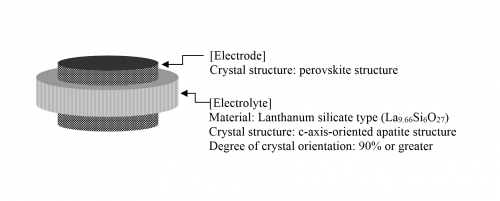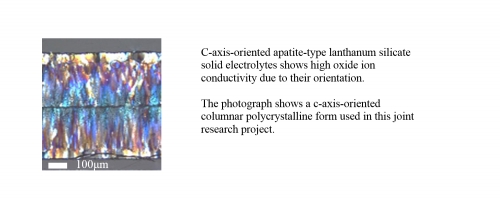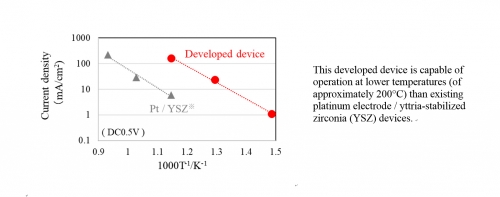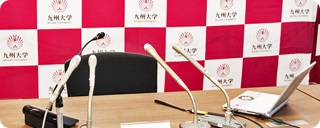研究成果 Research Results
- TOP
- News
- Research Results
- Results of Collaborative Activities between Industry and Academia: Development of Oxide Ion Conducting Solid-Electrolyte Device Capable of Intermediate to Low-Temperature Operation
Results of Collaborative Activities between Industry and Academia: Development of Oxide Ion Conducting Solid-Electrolyte Device Capable of Intermediate to Low-Temperature Operation
2018.11.07Research ResultsMaterialsTechnology
-Aiming to achieve low operating temperatures for sensors, oxygen separation and SOFCs-
[Outline]
Kyushu University (Principal researchers: Professor Kengo Shimanoe and Associate Professor Ken Watanabe, Department of Advanced Materials Science and Engineering, Faculty of Engineering Sciences) and Mitsui Mining & Smelting Co., Ltd. (President: Keiji Nishida; “Mitsui Kinzoku,” hereinafter) are pleased to announce the successful development, through joint research efforts, of an oxide ion conducting solid-electrolyte device capable of operating in the intermediate to low-temperature range (600°C and below). In addition to achieving lower costs and lower power consumption for solid-electrolyte gas sensors, oxygen separation membranes and SOFCs, it is also hoped that the technology developed on this occasion will find further applications in new, high-performance devices in the IoT society of the future.
[Background to development and features of technology]
Currently, typical solid electrolyte devices mainly use platinum electrode material and oxide ion conducting yttria-stabilized zirconia (YSZ). However, since these solid electrolyte devices require operating temperatures of at least 600°C or higher, there is currently a demand for devices capable of operating at lower temperatures. Achieving the creation of solid electrolyte devices capable of low-temperature operation required the development of high-performance electrode materials and solid electrolytes, and an improvement in interface formation technologies for creating an effective interface at the join between these materials.
In this joint development project, through the application of an oriented apatite-type solid electrolyte material (with high oxide ion conductivity) developed by Mitsui Kinzoku using its own proprietary manufacturing technologies, together with design technologies for perovskite-structured oxide electrodes (with high oxygen activity and mixed conductivity characteristics) and interface formation technologies developed by Kyushu University, researchers succeeded in the development of an advantageous solid electrolyte device capable of operation in the Intermediate to low-temperature range.
The solid electrolyte developed by Mitsui Kinzoku shows high-performance characteristics, with an oxide ion conductivity over 10 times that of YSZ at 600°C, and around 1,000 times that of YSZ at 300°C; while the electrode material developed by Kyushu University shows high oxygen activity and good mixed conductivity at temperatures of 400°C and below. A device created by combining these materials showed a current value of of 161mA/cm2 when a voltage of 0.5V (DC) was applied to it at a temperature of 600°C. This electrical characteristic value is approximately 27 times higher than with typical existing devices utilizing platinum electrodes and YSZ solid electrolytes, proving that such devices are capable of operation at operating temperature ranges around 200°C lower than existing devices.

[Device cutaway schematic]

[Cross-sectional photograph of the solid electrolyte]

[Characteristics]
Research-related inquiries
- TOP
- News
- Research Results
- Results of Collaborative Activities between Industry and Academia: Development of Oxide Ion Conducting Solid-Electrolyte Device Capable of Intermediate to Low-Temperature Operation































